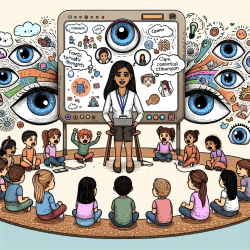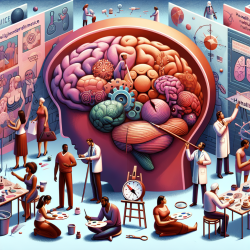Introduction
In the field of speech-language pathology, understanding the intricacies of memory retention can be pivotal in shaping therapeutic approaches. The research article "Two Case Studies of Very Long-Term Retention" by Maxcey, Shiffrin, Cousineau, and Atkinson (2021) offers valuable insights into the mechanisms of long-term memory retention. This blog aims to explore these findings and discuss how practitioners can apply them to improve therapeutic outcomes for children.
Key Findings from the Research
The study presents two compelling case studies that demonstrate the potential for extremely long-term memory retention. The first case study involved Richard C. Atkinson (RCA), who relearned word sequences from his dissertation experiments conducted 67 years prior. The second case study involved Denis Cousineau (DC), who demonstrated retention of visual search skills over a 22-year interval.
Key findings include:
- RCA's relearning was significantly better for words presented in the original order compared to a scrambled order, suggesting that associative memory may be less susceptible to retroactive interference.
- DC's visual search skills showed excellent retention, with response times and search rates indicating that procedural memory for search tasks can be preserved over decades.
Implications for Practitioners
These findings underscore the importance of understanding the factors that contribute to long-term memory retention. For practitioners in speech-language pathology, this knowledge can inform strategies to enhance learning and retention in children. Here are some practical applications:
- Associative Learning: Encourage associative learning by creating connections between new and familiar concepts. This can help reinforce memory and improve retention over time.
- Contextual Variability: Introduce variability in learning contexts to reduce reliance on specific cues and promote generalization of skills.
- Relearning Techniques: Incorporate relearning sessions to strengthen memory traces and facilitate retrieval of learned material.
Encouraging Further Research
While the case studies provide valuable insights, they also highlight the need for further research to explore the nuances of long-term memory retention. Practitioners are encouraged to engage in research initiatives that investigate the impact of various therapeutic interventions on memory retention in children.
Conclusion
The findings from the research article "Two Case Studies of Very Long-Term Retention" offer a glimpse into the potential for enduring memory retention. By applying these insights, practitioners can enhance their therapeutic approaches and contribute to better outcomes for children. To delve deeper into the original research, please follow this link: Two case studies of very long-term retention.










